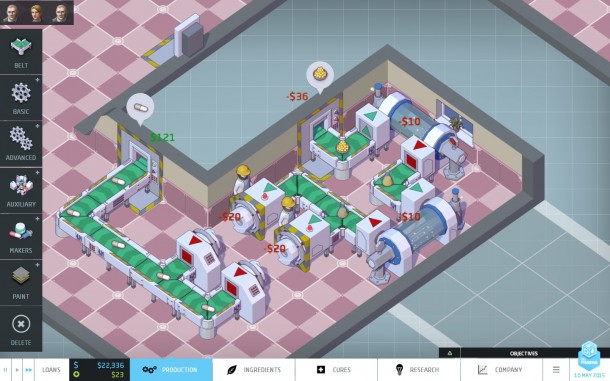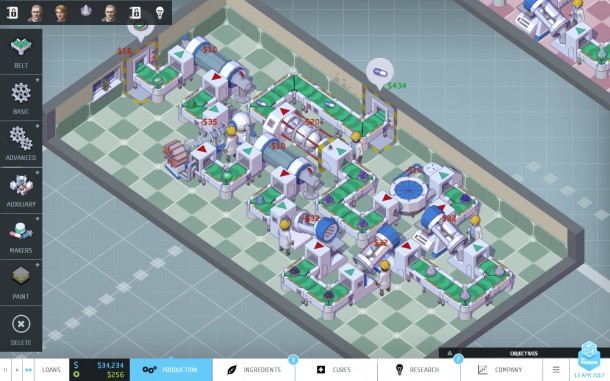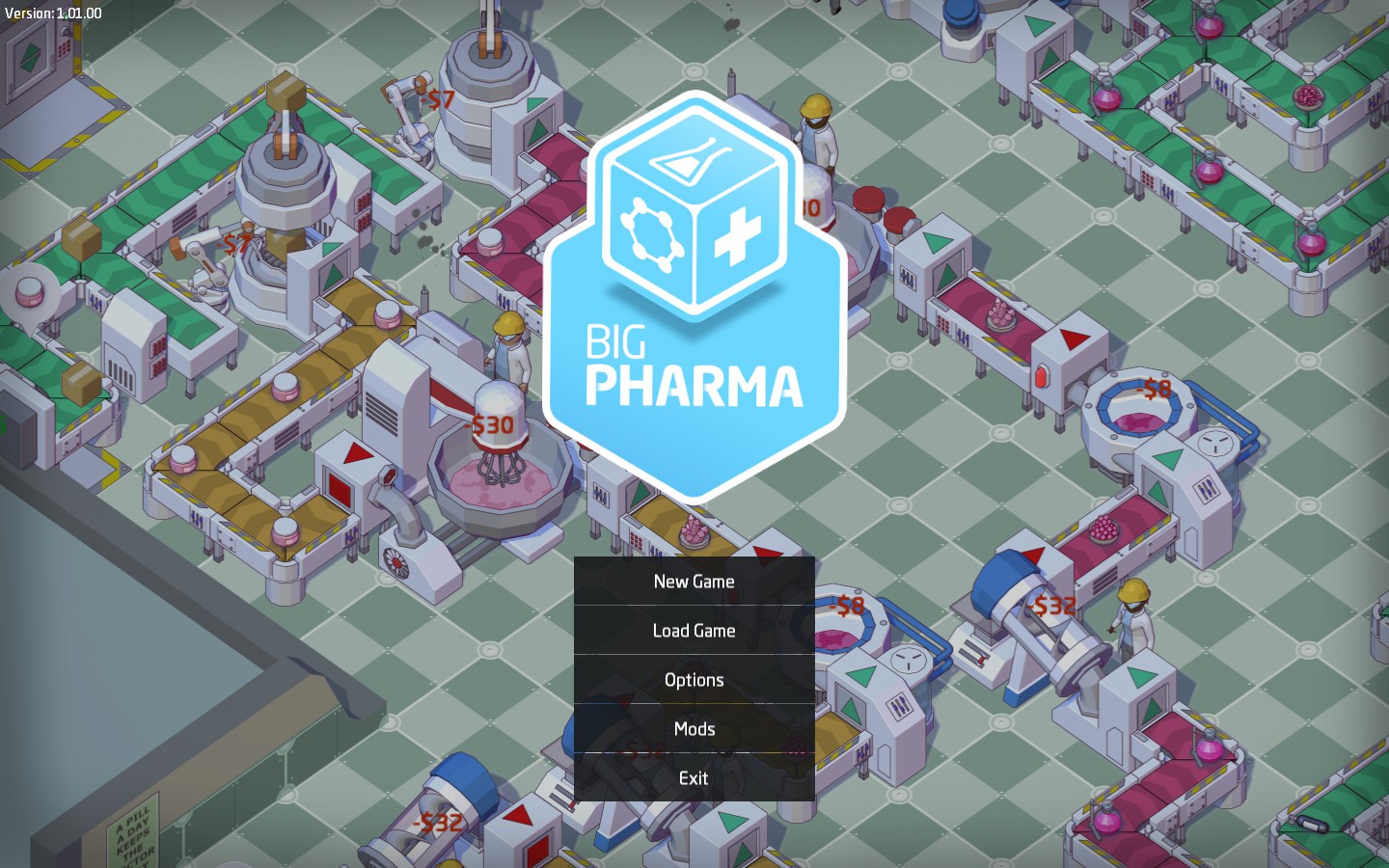I’ve spent a good chunk of time playing around with Big Pharma, and once I got past how cute the art style was I began to notice a few things. Firstly, making money isn’t easy, but once you have money you make more money faster. Secondly, making sure your drugs aren’t harmful costs you more than it makes you, so pump out the side effects. Thirdly, packing everything in as tightly as possible means more space for more things. Fourthly, once I began aiming for those first three things, I realized I had become a monster.
But hey, I was a monster making money, which meant I could eventually start working on producing drugs to cure all kinds of things, and if I was feeling up to it I could even get rid of all the nasty side effects. When money stopped being tight, I was able to do amazing things. So I guess the message is something about necessary evils? I dunno. That’s not really why I liked this game.

Big Pharma sits firmly in the Anno style of resource management games. You’re tasked with specific goals in any given mission, such as providing 500 of five different types of medicines inside a certain number of years, and are given a handful of awkward factory spaces. While it seems straightforward enough, each of the machines you wind up needing to use to turn ingredients into medicine have input and outputs, meaning you need to place them where conveyer belts can enter and exit them — all while maintaining enough open space to continue your conveyer belts into the next machines, and so on, until your medicine is ready to be turned into pills and exported.

What this means is that you run out of space quite often, and need to learn how to pack machines in as close together as possible to make optimum use of your space. Sometimes it simply can’t be done, and you need to work around it. That’s Anno in a nutshell. Instead of islands and supply chains it’s factories and manufacturing chains, all working at a set pace.
It’s fun, and cathartic. And as you progress in the missions, eventually supremely difficult.
One of the missions sort of in the middle range of difficulty tasks you with supplying several hundred Sickle Cell Anemia treatments within nine years. It sounds easy enough, but in order to get to where you can produce it at all, you need to start pumping out other, lower grade medicines to sustain a positive income — all while unlocking more factory space to increase your income in order to hire explorers and researchers to find more ingredients and unlock more machines — so that you can begin upgrading medicines to have new effects — several times, in fact, in order to reach the effect you need your medicine to have. All while packing your machines into space that leaves enough space for more machines to accomplish this feat.
If that sounds maddening, you may want to keep your distance because that’s the ballgame. That example is basically what Big Pharma is about, and you’re either all about this style of game or you aren’t and you’ll be bored out of your mind. I happen to find games like this supremely relaxing, and while Anno 2070 might still be my goto resource management game, Big Pharma may be a close second.
This review is based on a review code of the game sent to SideQuesting by the publisher



No Comments